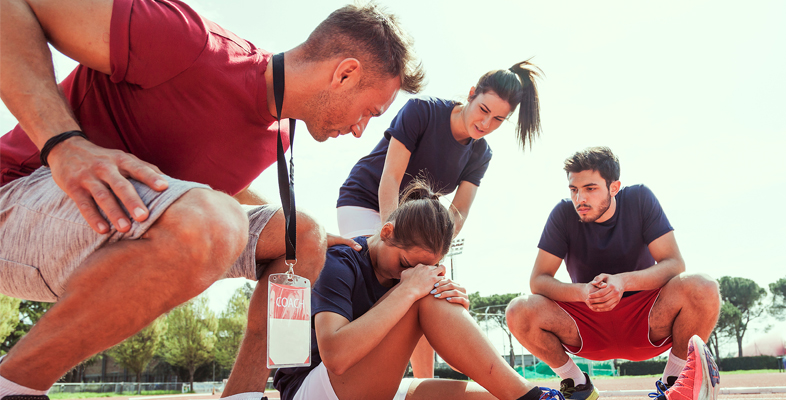3.1 Other proposed stress-injury mechanisms
In addition to distraction, attention narrowing and muscle tension, other mechanisms have also been proposed to explain how stress can lead to sport injury, including: immunosuppression, disrupted tissue repair, sleep disturbance and altered self-care (Petrie and Perna, 2004). These are summarised in Table 2 below.
As you will see, some of these factors are linked to each other as well as to the mechanisms of distraction, attention narrowing and muscle tension discussed earlier. For example, sleep disturbance may lead to distraction. It is important to recognise that in practice it might be multiple mechanisms acting together that lead to the development of a sport injury.
| Immuno-suppression | Disrupted tissue repair | Sleep disturbance | Altered self-care |
|---|---|---|---|
| Chronic (long-term) stress has been linked to suppression (reduced functioning) of the immune system which can increase injury risk. | Stress can increase the secretion of the hormone cortisol which can inhibit processes involved in healing muscle and other body tissues. | Stress can interfere with the quality and duration of sleep. This can lead to factors that might cause an injury such as reduced reaction time, increased aggression, reduced concentration, distraction, or impaired decision- making. | Stress can cause an individual to take less care of themselves. As a result, they may fail to engage in activities that help prevent injury such as healthy eating, hydration or adequate warm-up. |
In Section 2 of this session it was suggested that there are two main psychological factors that increase the risk of injury – stress and personality. Having looked at stress, next you’ll look at the links between personality and injury.
